Beekeeping has always been an important part of human history. In ancient times it was quite different than today, as people were simply “stealing” honey from wild bees. The oldest known manuscripts, about beekeeping with hives, were found in Sahara and dated to 2400 BC.
Despite a long beekeeping history, the production of honey as we know it today didn’t develop before the 1800’s. During this time, advances in the field included the invention of the Longstroth Hive and improvements in the way people treated bees has changed drastically too.
If in the past, they had to kill bees to harvest the honeycombs, that was no longer the case, as beekeeping became more sustainable. Checkout our article on the https://schoolofbees.com/in-praise-of-the-langstroth-hive/ to learn about the origins on the modern beehive.
In this article, we start with a man who lived hundreds of years before christ and travel all the way to the 21. century, keep reading until the end as we have a few surprises in there. We hope you enjoy the journey of learning about our “10 famous beekeepers in history”.
Table of Contents
1. Hippocrates (460 to 377 before Christ)

Starting with one the earliest in human history, the person to mention would be Hippocrates.
Hippocrates was one of the first fathers of medicine and used beekeeping and honey to treat his patients. He believed in the healing power of food, and other natural medicines for the body.
He used honey for a number of treatments, including;
- Treatment of pain with vinegar and honey.
- Prescribing honey for, muscle pains, headaches, fever, and other symptoms.
- Honey mead for thirst (honey with water or alcohol).
- He used honey and pollen to clean ulcers and sores and also to heal them.
- Advising honey as a treatment for many illnesses.
- He dedicated a big part of his life, treating sick children with raw honey diet, prescribed by him.
- Often he prescribed a mixture made of honey and vinegar, to treat respiratory problems, to help the body to remove excess water or help with loss of strength.
- Hippocrates was one of the first people to use bee venom to treat arthritis.
As you can see, one of the most important fathers of medicine, used honey to treat many different conditions and illnesses, and he is probably one of the first documented beekeepers to do so.
2. Anton Janša (1734-1773) – the father of European beekeeping

Janša developed an interest in painting as a young child, which later became connected with his love for beekeeping. He left Slovenia and traveled to Vienna with brothers in 1766, where he rediscovered his true passion.
He had previous experience with bees, as his father owned more than 500 hives. Being surrounded by the beekeeping discourse at home and in his village, definitely made an impact on him.
In 1769 he became the first beekeeping instructor in the first beekeeping school of Europe. Just a year later he became the Imperial beekeeper. He was the first who taught, that bees shouldn’t be killed but rather than that, released to pasture.
He wrote textbooks with fresh and improved methods of beekeeping, completely new for those days. One of the books was a “Complete Guide to Beekeeping” which was written in German. His most important books have been translated into many different languages. You can check out one our guides here for urban beekeeping https://schoolofbees.com/urban-beekeeping-for-beginners-an-essential-introduction/.
Janša was the one to suggest, the changes to the shape and size of the hives, to be stacked in a more convenient and useful matter. Among other things, he discovered how bees mate, and other secrets within the hive about the sisterhood of workers, drones and the queen.
Due to his talent for painting and illustration, he painted the hives and illustrated his books. He was one of the first to include illustrations and paintings, which made beekeeping more attractive.
3. Leo Tolstoy (1828-1910)

According to his wife Sonja, he was a passionate beekeeper. She described him crouching in front of the beehives, with a protective net on his head. Looks like he was quite mesmerized by beekeeping as she describes, that it was like the center of his world and he wanted to inspire everyone to be interested in bees.
It is said that he enjoyed beekeeping to such extent, that his wife worried about him.
As he enjoyed beekeeping, he was also quietly doing research for his book War and Peace, where he cleverly includes the beekeeping experience, metaphorically and directly to enhance the story. He includes metaphors from his time of beekeeping very cleverly, comparing it to the state of war, in a way that truly enriched the book.
4. Amos Ives Root (1839-1923)
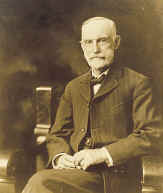
As Amos himself, told the story of starting his beekeeping experience;He saw a swarm of bees near work in August of 1865. One of his employees joked about Amoses wish to have a swarm of bees and asked how much he would get paid if he catches the swarm.
Amos thought it impossible but offered a dollar if the bees would arrive securely in the box. The worker caught them and returned with the box full of bees. Amos told him to bring them, to the unoccupied third level of the factory. That’s how his experience with bees started.
After that, he became somewhat addicted to beekeeping. Sometimes instead of supervising his jewelry factory, he would skip a day of work, to watch his bees or travel to Ohio and Cleveland to visit other beekeepers and talk about bees.
In 1869 he even built a separate factory, manufacturing bee supplies. He also founded a magazine “Gleanings in Bee Culture” which still exists today under the name of “Bee Culture”! Another interesting fact about the magazine is, that it was the first to report Wright Brother flights.In 1870 he wrote a book “ABC of Bee Culture”, which is still updated and printed to this day.
5. Karl Kehrle 1898-1996 (brother Adam)
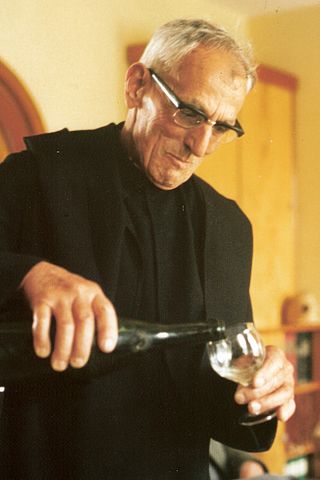
At the age of 12, he moved to the Benedict monastery in Devon (England), to start a life as a monk. Just five years later he began working with bees, and in 1919 he assumed the responsibility for the monastery beehives.
In 1916 almost all the bees died. Later he discovered that the bees died because of a disease called “The Isle of Wight”. He found a solution, replacing the bees (native English ones), for a more resilient stock from elsewhere.
To do that, he started his journey through the Mediterranean, on a quest for stronger and more resilient bees. He didn’t stop there, as his journey for a “better bee” took him to the Middle East and Africa, all the way to the Sahara desert. He traveled by car, walking or even with a donkey. He brought new stocks and bred them, to achieve the best results possible.
He devoted 70 years of his life to developing the Buckfast bee. He was said to be, one of the best bee breeders out there, having calmness and sensitive touch, that the bees could respond to.
6. Thomas Jefferson (1743-1826), the third American president
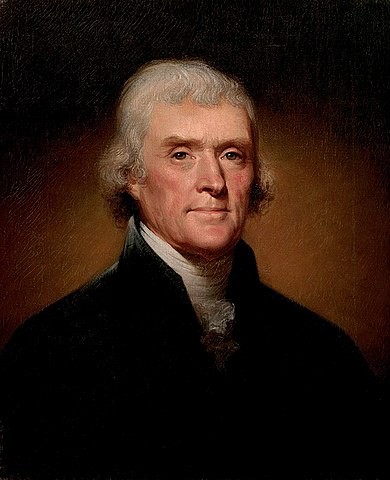
Thomas Jefferson the third American president, had a variety of different interests. Besides being a lawyer, musician, and a farmer he was also a beekeeper. The drawings depicting his estate, show bee hives south and north of the estate. The historical memorandum books, show us his purchase of beeswax between the years of 1769-1783 and other purchases later in life. It’s documented that in 1789 he purchased honey on Isle of Wight (England) before returning to the US.
His overseer in the years of 1806-1822, Bacon, noted that Mr. Jefferson came to his house to look at his be hives (he owned more than 40 of them which was a big number for that time). Additionally, he recorded few historical observations on bees for the state of Virginia.
7. George Washington (1732-1799), the first American president
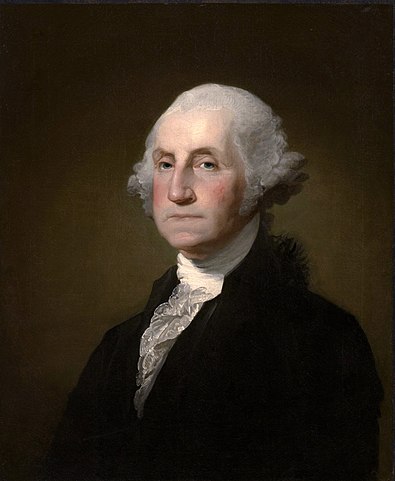
Records of his estate at Mount Vernon, indicate that he was using wooden beehives to produce honey. Even though there are not many records of him keeping bees, there are some records that he was also regularly purchasing honey.
He was producing his own honey, as well as purchasing honey and other foods from the enslaved people on the property. Records show, that he purchased honey from Nat his blacksmith and Davy (enslaved overseer) and even carpenters named Isaac and Sambo.
He enjoyed eating honey very much, and there are records from his relatives describing his favorite breakfast. He ate pancakes made of corn (“hoecakes”) covered with butter and substantial amounts of honey, accompanied by tea.
8. Martha Stewart (1941 -present)
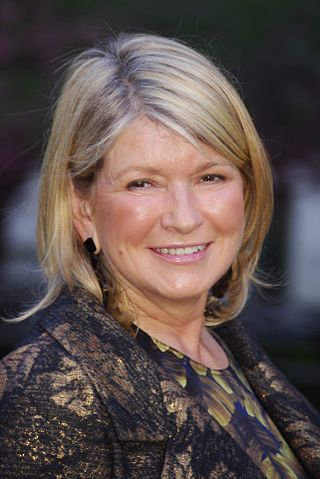
Martha Stewart is well known for her TV shows, books, and other public appearances. But a lot of people might not know, that she is a long-time beekeeper. Her love for gardening, inspired her to be a beekeeper, as she realized the importance of bees for plants.
After establishing her own hives, she started using her own honey in recipes for cakes, cookies, ice cream and many other recipes that can be found online.Her colonies experienced some troubles over the years, and she had to “rebuild” the colony with additional hives.
Through the years she has become an expert on beekeeping, and also a public figure inspiring beekeeping all around the world.
9. Sir Edmond Hillary (1919-2008)
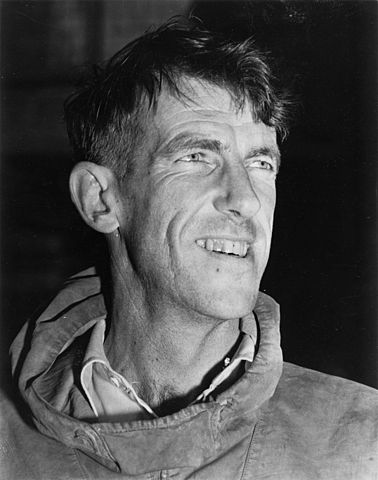
Edmond Hillary was a New Zeeland’s climber and explorer. He was the first to reach the top of Mount Everest. He loved beekeeping for a big part of his life. So much, that he even became a commercial beekeeper with his brother.
Despite his climbing and philanthropic accomplishments, he preferred to be called, simply a beekeeper.
10. Eva Crane (1912-2007)

Eva Crane was a nuclear physicist (more specifically a quantum mathematician). At some point in her life, she shifted her interest to bees and beekeeping, and spend decades researching them and writing books- Bees and Beekeeping, in 1990 and the World history of Beekeeping and honey hunting 1999. Both of the books have more than 600 pages. In her research, she traveled to more than 60 countries often in unflattering conditions.
Sources:
http://www.slovenia.si/visit/features/pioneers-of-slovenian-beekeeping/
https://anillustratedhistoryofslavicmisery.wordpress.com/2017/09/13/the-father-of-european-beekeeping-the-apiculture-of-anton-jansa/
https://www.buzzaboutbees.net/Honey-And-Ancient-Medicine.html
https://blog.beeraw.com/honey-and-hippocrates
https://today.mims.com/10-ancient-health-remedies-from-hippocrates
http://www.badbeekeeping.com/tolstoy.htm
https://badbeekeepingblog.com/bonus-pages/famous-beekeepers/
https://www.nytimes.com/1996/09/04/world/brother-adam-98-bee-breeder-who-developed-new-varieties.html
https://www.monticello.org/site/research-and-collections/bees-and-honey
http://thomasjeffersonleadership.com/blog/thomas-jefferson-on-the-honey-bee/
https://foodscross.com/en/j/bees-buzz-en/8-of-the-most-famous-beekepers-in-history/
https://badbeekeepingblog.com/2018/02/19/presidential-bees/
https://www.beeculture.com/the-story-of-a-i-root-3/
https://www.beeculture.com/the-story-of-a-i-root-beginning-bees/
http://gwpapers.virginia.edu/george-washington-and-bees/
https://inhabitat.com/importance-of-bee-population-inspire-martha-stewart-to-care-for-hives-of-her-own/
https://www.theguardian.com/culture/2014/jul/04/the-10-best-famous-beekeepers
https://sl.wikipedia.org/wiki/Edmund_Percival_Hillary
https://www.evacranetrust.org/
http://www.rusevec.com/en/green-village/40-zelena-vas/%C4%8Debelarstvo/233-history-of-beekeeping-and-its-development.html

What about the Egyptians? Honey was found in the pyramids…